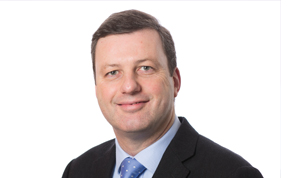News / NAO highlights scale of challenge facing urgent care
Access to unplanned or urgent care paints a picture of urgent and emergency care services in difficulty with major falls in performance in hospital and ambulance services and declining satisfaction in primary care access. This is in the face of increasing demand and despite increases in funding and staff numbers.
Meg Hillier, chair of the Public Accounts Committee said it was clear that ‘more of the same won’t work’. ‘The Department of Health and Social Care and NHS England need to wake-up to the severity of these long-term trends if they are going to give patients the service they deserve,’ she said.
Others warned that the solutions would not be found solely within the NHS. Mathew Taylor, chief executive of the NHS Confederation, said there was ‘a clear need for wider action’ with a strategy for national health that included social care and took the wider determinants of health into account.
The report – a factual overview with no recommendations for change – covers general practice, community pharmacy, 111 calls, ambulance services, urgent treatment centres and accident and emergency departments. These services involved around half a billion patient interactions in 2021/22 at an estimated cost of £21.5bn a year.
It said that access to urgent care in general had worsened. The 14 seconds taken to answer ambulance-related 999 calls in March 2018 rose to a high of 88 seconds in December last year, before falling again. The mean ambulance response time for category 2 incidents was 39 minutes 33 seconds in March this year, compared with under 28 minutes in March 2018.
And the ambulance handover target of 30 minutes has not been met since data started to be collected in 2017 – with more than one in four handovers exceeding this threshold in March 2023.
Hospital services are faring little better. In March this year, 57% of patients in type 1 accident and emergency departments were admitted, transferred or discharged within four hours of arrival. This compares with 95% in 2011. The last time the NHS met the 95% four-hour target was in July 2015 and there is significant variation across the country.
The NAO also underlined the impact of the pandemic, with beds continuing to be occupied with Covid patients and staff absence now higher than before the outbreak.
Satisfaction levels with access to GPs and with the 111 service have also fallen
The worsening overall performance is despite increased spending – the total budget for NHS England last year was £28bn more than in 2016/17 (at 2022/23 prices). Staffing levels have increased by 32% from a low of 963,471 in 2013 to an all-time high of nearly 1.3 million. Beds have increased slightly following a downward trend before the pandemic, but occupancy rates have also risen along with length of stay.
According to the Centre for Health Economics, productivity fell by 23% across 2019/20 and 2020/21 – covering the start of the pandemic.
Gareth Davies (pictured), head of the NAO, pointed out that more people were receiving urgent care, with more money being spent and more staff employed. ‘Yet patients' satisfaction and access to services have been worsening, suggesting there is no single, straightforward solution to improving a complex and interdependent system,’ he said. ‘While NHS England has a plan to improve services, long-term trends in workforce, activity, spending and performance indicate this will be a significant challenge.’
The confederation’s Mr Taylor said that health leaders would recognise the NAO’s description ‘Leaders know there is much work to be done, and delivery of the NHS urgent and emergency care recovery plan – only launched in January – is well underway, but there are no simple solutions. The challenges facing UEC services must be seen in the context of continuing high levels of demand, staffing issues, winter pressures, the aftermath of the pandemic, squeezed budgets, industrial action and a social care sector on its knees.’
Miriam Deakin, director of policy and strategy at NHS Providers said there was a mismatch between high demand and limited capacity. ‘This problem will continue until longstanding challenges including the need for better national workforce planning and better capital investment are properly resolved,’ she said.
Related content
This forum will bring together national updates, topical issues, best practice examples and networking opportunities.
This conference will keep all those involved with NHS charities up to date with any changes to practices and procedures.